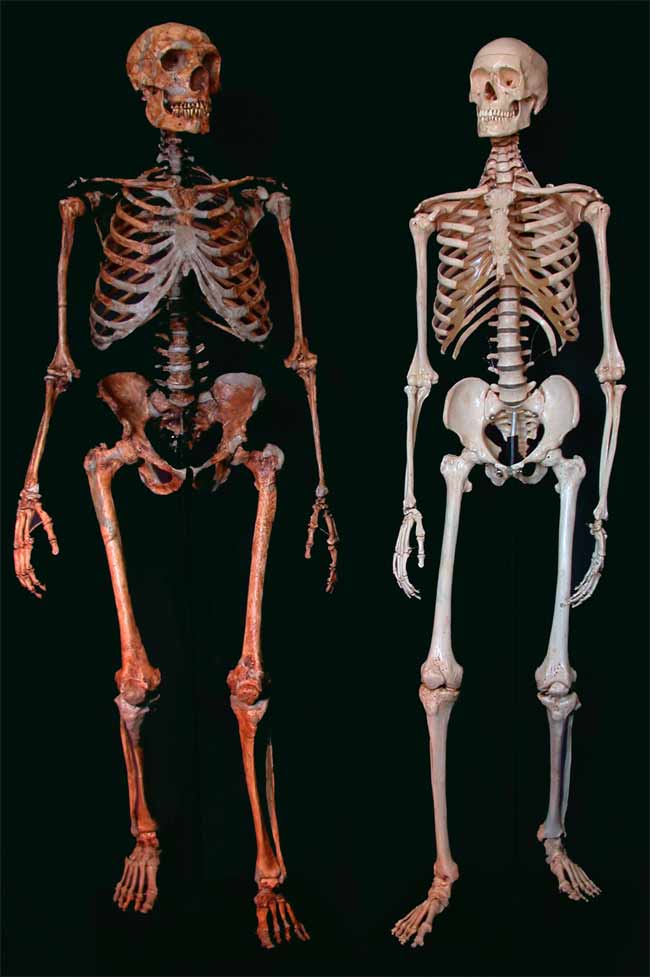Neanderthals' Disappearance Gets More Mysterious

Stocky and well-suited for the cold, Neanderthals once dotted the plains of Europe and western Asia before vanishing from Earth more than 20,000 years ago.
The mystery of what caused their demise has baffled scientists for decades, with one theory stating our hominid cousins failed to survive a big ice age that Homo sapiens apparently endured. New research rejects that thinking.
A study published in the Sept. 13 issue of the journal Nature suggests abrupt global cooling was not the final calamity that wiped out Neanderthals. The study does not, however, offer any direct clues about what did finally kill off the Neanderthals.
"Our findings suggest that there was no single climatic event that caused the extinction of the Neanderthals," said study team member Katerina Harvati, a paleo-anthropologist at the Max Planck Institute for Evolutionary Anthropology in Germany.
The Neanderthals lived as far back as 230,000 years ago, disappearing from the fossil record a few thousand years after modern humans appeared on the scene. But several scientific uncertainties have made it difficult for scientists to blame climate or modern humans for the extinction.
For instance, measurements of carbon isotopes have become a standard way of dating sediments and artifacts. However, the results give scientists a so-called radiocarbon date, which is based on the amount of time it takes radiocarbon to decay once an organism dies. Converting the radiocarbon number into calendar years is tricky and imprecise, the researchers say.
So team member Chronis Tzedakis of the University of Leeds and his colleagues realized they didn't need an actual calendar date. They devised a way to correlate estimates of dates for the Neanderthal demise with past climate records.
Sign up for the Live Science daily newsletter now
Get the world’s most fascinating discoveries delivered straight to your inbox.
They applied the method to three dates proposed for Neanderthal extinction gleaned from artifacts preserved in Gorham's cave in Gibraltar, Spain, a site thought to have been occupied by some of the last surviving Neanderthals.
The dates include two fairly well-accepted estimates of the timing of their demise—32,000 to 30,000 radiocarbon years ago and around 28,000 radiocarbon years ago—as well as a more contentious estimate of around 24,000 radiocarbon years ago.
The team found the first two dates did not correspond with any extreme, abrupt climate events. The youngest and more controversial, radiocarbon estimate fell onto the paleoclimate record during a period just before the expansion of ice sheets and the onset of cold conditions in northern Europe, so the timing is not quite right. And the authors say that climate event was a 1,000-year gradual transition anyway, rather than an "instant ice-age."
"We're saying there is no abrupt, cold extreme event that correlates with any of those dates," said study team member Konrad Hughen of Woods Hole Oceanographic Institution in Massachusetts.
Jeanna Bryner is managing editor of Scientific American. Previously she was editor in chief of Live Science and, prior to that, an editor at Scholastic's Science World magazine. Bryner has an English degree from Salisbury University, a master's degree in biogeochemistry and environmental sciences from the University of Maryland and a graduate science journalism degree from New York University. She has worked as a biologist in Florida, where she monitored wetlands and did field surveys for endangered species, including the gorgeous Florida Scrub Jay. She also received an ocean sciences journalism fellowship from the Woods Hole Oceanographic Institution. She is a firm believer that science is for everyone and that just about everything can be viewed through the lens of science.










